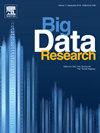Heterogeneous Graph Convolutional Network Based on Correlation Matrix
Abstract
Heterogeneous graph embedding maps a high-dimension graph that has different sorts of nodes and edges to a low-dimensional space, making it perform well in downstream tasks. The existing models mainly use two approaches to explore and embed heterogeneous graph information. One is to use meta-path to mining heterogeneous information; the other is to use special modules designed by researchers to explore heterogeneous information. These models show excellent performance in heterogeneous graph embedding tasks. However, none of the models considers using the number of meta-path instances between nodes to improve the performance of heterogeneous graph embedding. The paper proposes a Heterogeneous Graph Convolutional Network based on Correlation Matrix (CMHGCN) to fully use of the number of meta-path instances between nodes to discover interactive information between nodes in heterogeneous graphs. CMHGCN contains two core components: the node-level correlation component and the semantic-level correlation component. The node-level correlation component is able to use the number of meta-path instances between nodes to calculate the correlation between nodes guided by different meta-paths. The semantic-level correlation component can reasonably integrate such information from different meta-paths. On heterogeneous graphs with a large number of meta-path instances, CMHGCN outperforms baselines in node classification and clustering, according to experiments carried out on three benchmark heterogeneous datasets.

 求助内容:
求助内容: 应助结果提醒方式:
应助结果提醒方式:


